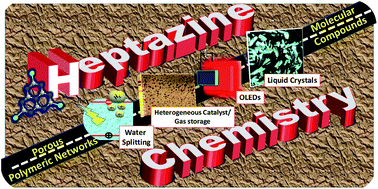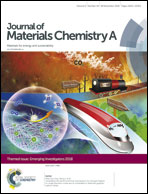Emergence of s-heptazines: from trichloro-s-heptazine building blocks to functional materials
Abstract
The barrier in any particular application is the material design and development of effective materials based on it. Currently, the major focus is on the development of material classes for energy conversion, storage and environmental applications. Thus material design and especially porous materials have created interest in researchers to search for a new class of materials. Polymeric carbon nitrides (g-CN, so-called g-C3N4) are such interesting materials which have been explored from the beginning of the 21st century as an active photocatalyst. The basic constituting unit of g-CN, heptazine, has driven scientists to develop various functional materials. Thus the heptazine class of compounds is an indispensable unit due to its rich-properties and demands extensive research for their exploration in many other applications. This review addresses the recent efforts by researchers on various material-designs based on heptazine and their startling applications from molecular compounds to porous frameworks. Furthermore, a timely and concise review on these emerging heptazines would be of interest for researchers as well as the scientific community. In addition, the probable application areas where these materials can have a deep impact on material design are discussed.

- This article is part of the themed collections: Recent Review Articles and Journal of Materials Chemistry A Emerging Investigators


 Please wait while we load your content...
Please wait while we load your content...